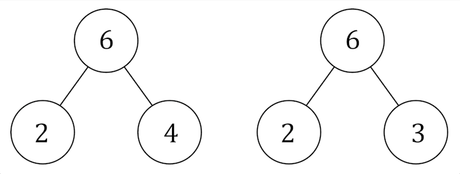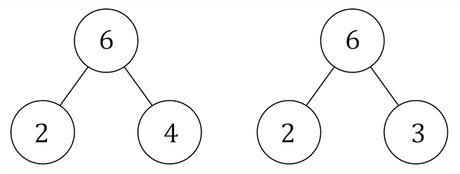SrideeStudio/Shutterstock" src="https://s.yimg.com/ny/api/res/1.2/5UiF8IrnWM7Bo9S4zk5YCA-/YXBwaWQ9aGlnaGxhbmRlcjt3PTk2MDtoPTYxNw-/https://media.zenfs.com/en/the_conversation_464/023b90e6ec10c6a841d 97c026a018d04″ data-src= "https://s.yimg.com/ny/api/res/1.2/5UiF8IrnWM7Bo9S4zk5YCA-/YXBwaWQ9aGlnaGxhbmRlcjt3PTk2MDtoPTYxNw-/https://media.zenfs.com/en/the_conversation_464/023b90e6ec10c6a841d97c0 26a018d04″/>
Mathematics education at school is stuck in the past. An adult visiting the school he attended as a child would see only superficial changes from what he himself experienced.
Yes, in some schools they might see a room full of electronic tablets, or the teacher using a touch-sensitive, interactive whiteboard. But when we drill down to the details - the tasks students are actually given to understand the subject - little has changed.
We've learned a tremendous amount in recent years about cognitive science: how our brains work and how people learn most effectively. This insight has the potential to revolutionize what teachers do in the classroom. But the design of mathematics teaching materials, such as textbooks, has benefited very little from this knowledge.
Some of this knowledge is counterintuitive and therefore unlikely to be applied unless done intentionally. What students prefer to experience and what teachers think is likely to be most effective is often not what helps most.
For example, cognitive science tells us that performing similar types of tasks together generally leads to less effective learning than combining tasks that require different approaches.
In math, practicing similar tasks together might involve a page of questions, each requiring addition of fractions. Mixing things up can involve putting fractions, probability, and equations together in immediate succession.
Students make more mistakes when doing mixed exercises and are likely to feel frustrated as a result. Grouping similar tasks together will therefore likely be much easier for the teacher to manage. But the mixed exercises give the student important practice in deciding which method to use for each question. This means that more knowledge is retained afterwards, which is why this is called a "desirable difficulty".
Cognitive science applied
We are only now beginning to apply these kinds of findings from cognitive science to design better teaching materials and support teachers in their use. It makes sense to focus on math at school because math is a compulsory subject that many people find difficult to learn.
The story continues
Teaching materials for schools are usually chosen based on gut reactions. A department head looks at a new textbook schedule and, based on his or her experience, chooses what he or she thinks is best. What else can they expect? But even the best materials offered are generally not designed with cognitive science principles like "desirable difficulties" in mind.
My colleagues and I have conducted research into educational design that applies principles from cognitive science to mathematics education, and are developing materials for schools. These materials are not designed to look easy, but to contain "desirable difficulties."
They are not divided into individual lessons as this pushes the teacher to move on when the clock tells them to, regardless of the student's needs. Responding to students' developing understanding and difficulties requires materials that are designed based on the scope of the ideas, rather than materials that fit easily into a two-page textbook or a 40-minute class period.
Switch things up
Taking an approach guided by cognitive science also means changing the way mathematical concepts are explained. For example, diagrams have always been a prominent part of mathematics education, but are often used haphazardly, based on the teacher's personal preference. They are very limited in textbooks due to space constraints.
Often, similar-looking diagrams are used in different topics and for very different purposes, leading to confusion. For example, three connected circles as shown below can indicate a division into a sum (the 'part-whole model') or a product of prime factors.
These are two very different operations, but they are often represented by the same diagram. Using the same type of diagram to represent conflicting operations (addition and multiplication) leads to students mixing them up and becoming confused.


The 'coherence principle' from cognitive science means avoiding diagrams where the disadvantages outweigh the advantages, and using diagrams and animations in a purposeful, consistent way across topics.
For example, number lines can be introduced at an early age and integrated into many subject areas to bring coherence to students' developing understanding of numbers. Number lines can be used to solve equations and, for example, to represent probabilities.
Unlike the pie charts above, the use of number lines below does not conflict, but rather reinforces each other. In each case, the positions on the number line represent numbers, starting from zero on the left, increasing to the right.




There are worrying inequalities in learning mathematics, with students from poorer backgrounds underachieving compared to their wealthier peers. There is also a huge gender participation gap in mathematics, at A-level and beyond, with many more boys than girls taking advantage of it.
Socio-economically advantaged families have always been able to get their children out of trouble by using private tutors, but less privileged families cannot. Better quality teaching materials, based on insights from cognitive science, soften the impact for students traditionally disadvantaged by gender, race or financial background in learning math.
This article is republished from The Conversation under a Creative Commons license. Read the original article.


